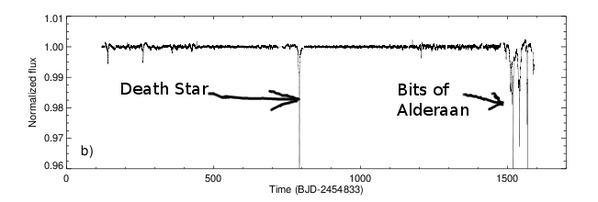Wishful thinking used to keep one's donors donating to a program that will not produce any real or significant results because it relies on the singular idea that extraterrestrial beings are using radio waves to communicate. Never mind the vastness of space that makes pointing listening devices into the skies in hopes of catching ET broadcasting his tele-novellas into space about as likely as fishing out a specific and distinct grain of sand dropped somewhere in the middle of the vast oceans of the world by someone else. Or that we could somehow accurately spot, perceive and discriminate some mega structure apart from all other naturally occurring objects in the universe tens, hundreds, thousands of light years away using our current technology.




